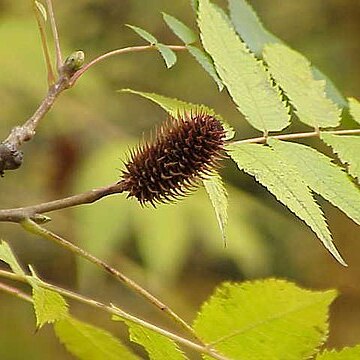A shrub or tree. It can be 15-25 m high. It spreads 10 m wide. The bark is yellow-brown with cracks along it. The leaves are 8-30 cm long. The leaf stalk is 1.2-9.2 cm long. There are 1-15 leaflets. The side leaflets do not have leaf stalks. The leaflets taper to a point. The flower spike has female flowers at the base and male flowers at the tip. The female section is 1-3 cm long and the male section is 1-3.5 cm long. There are also male spikes 2-15 cm long. The fruit are like cones and 4 cm long. The nutlets are oval and 3-6 mm long by 3-6 mm wide.

